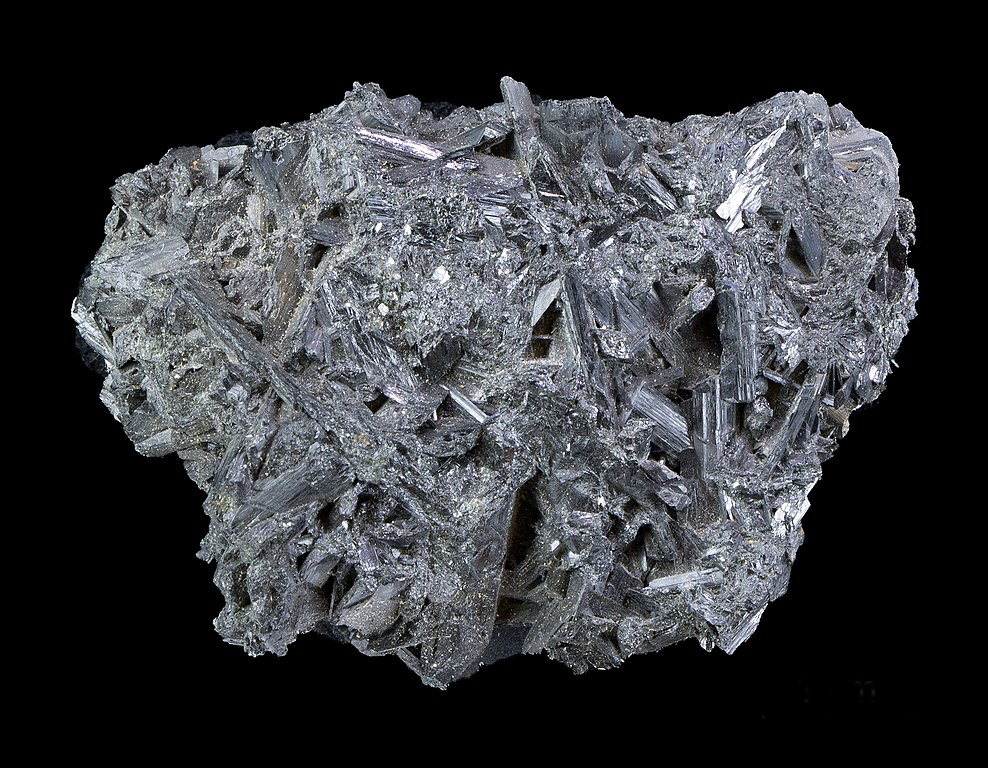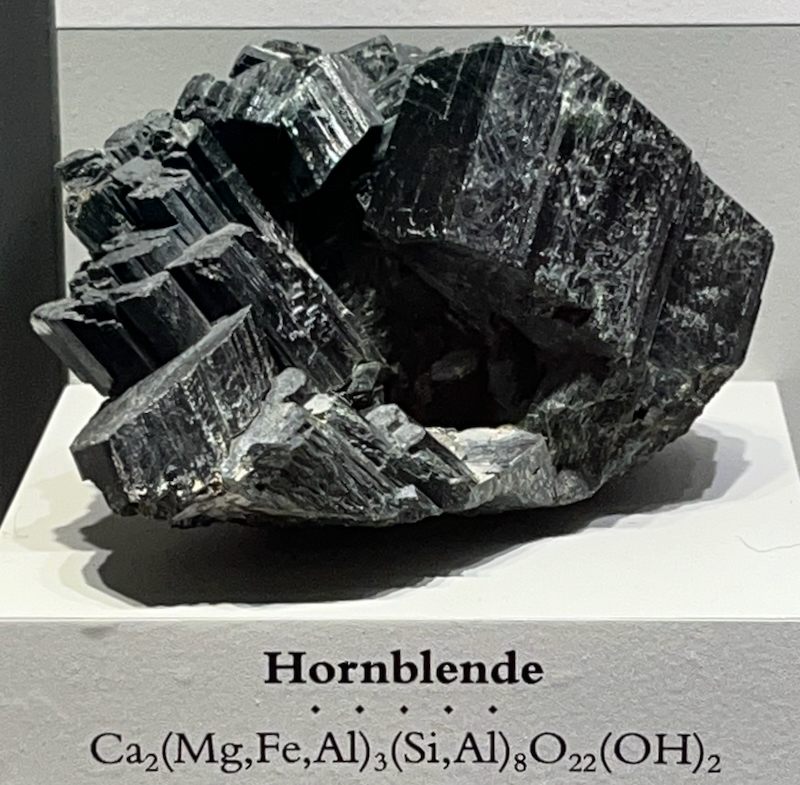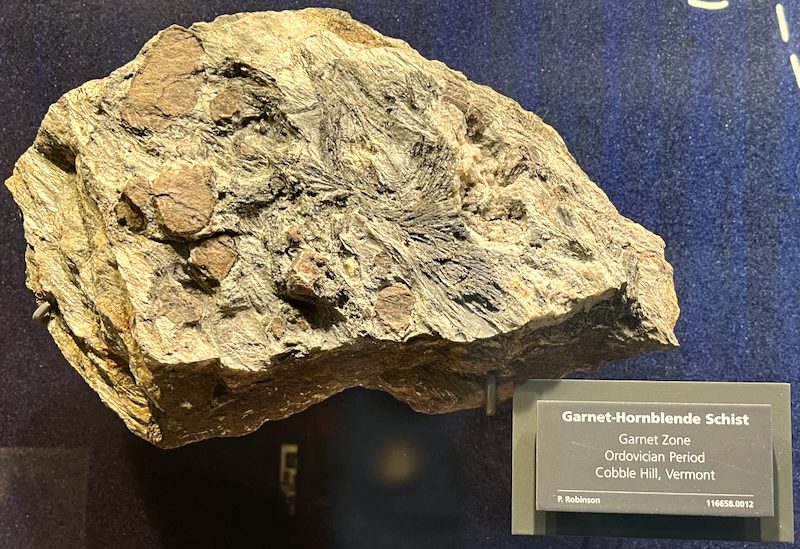Hornblende
Just looking at the name, you might think that hornblende was a blend of horn-shaped crystals. Even though that’s not what it means, you actually wouldn’t be totally wrong. It often forms these groups of star-shaped crystals in rocks, and each part of the crystal could possibly be said to look hornlike, or like little swords, or like rectangles that come to a point. But then again, other minerals can make similar shapes, such as schorl or other minerals that are in a group called “amphiboles,” which includes hornblende, actinolite, and others. When they’re black, as hornblende often is, several of these minerals get lumped together as “hornblende” because they look pretty much identical. A lot of rockhounds when they see crystals of any of these minerals say “Oh, that’s hornblende” because it’s a lot easier to say that than it is to figure out what it really is. Maybe it’s not a coincidence that the “blende” part means “to deceive” in German. Maybe it’s hornblende, maybe it’s not! Hornblende finds its way into several different kinds of rocks, including granite, diabase, basalt, gneiss, and schist, and it’s in schist where you’re most likely to see the star-shaped crystals. In the other types of rock, it usually occurs in small black flecks.
| Formula | Group or Type | Shape | Hardness | Specific Gravity | Streak | Luster |
|---|---|---|---|---|---|---|
| Ca2(Fe2+4Al)(Si7Al)O22(OH)2 | Amphibole | Hexagonal | 5–6 | 2.9 | Pale gray to white | Vitreous to dull |


